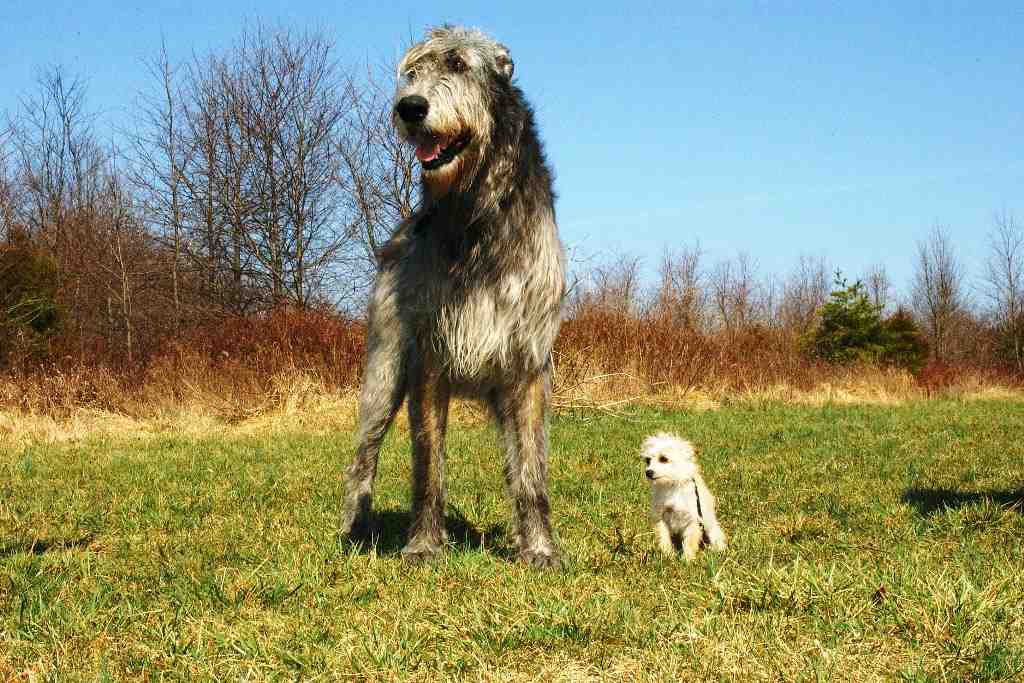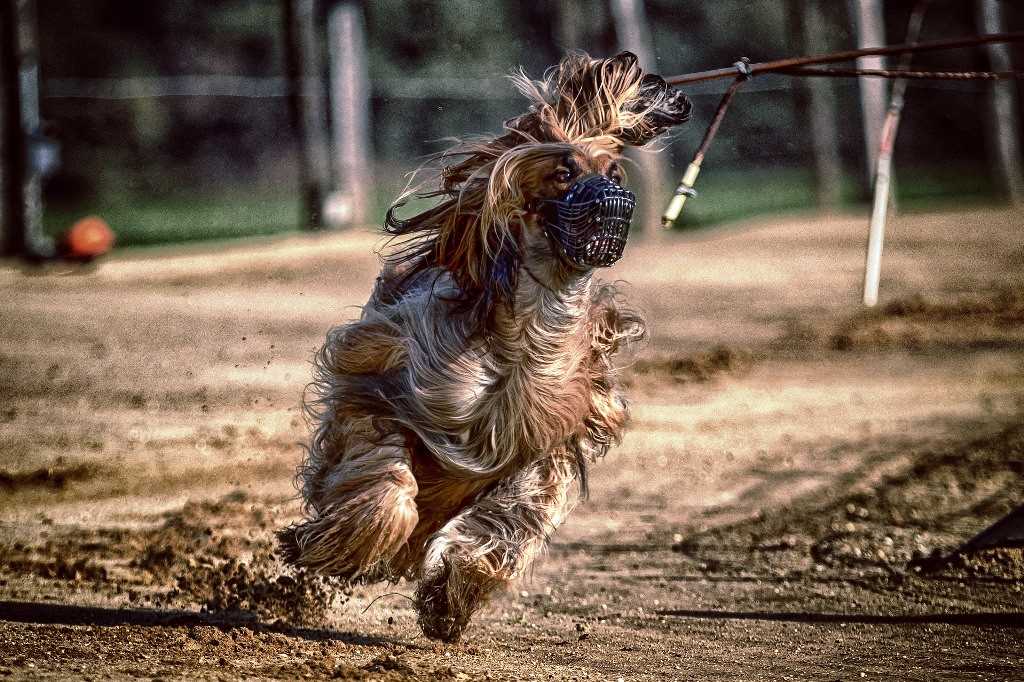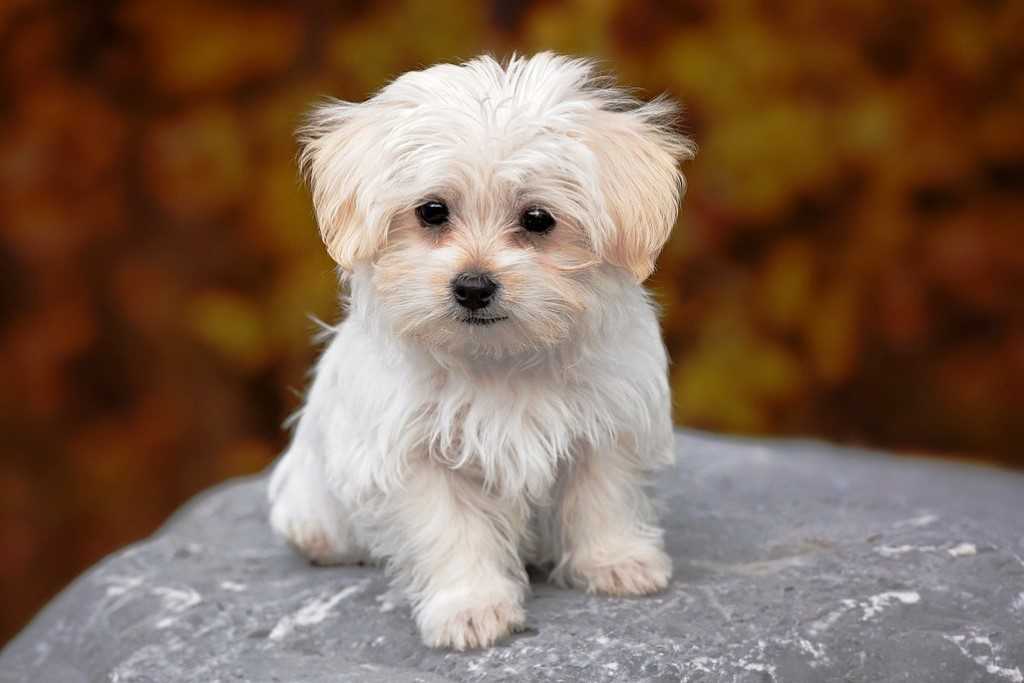The origins of the Irish Greyhound dog breed are very controversial; some findings suggest that this breed may have come to Ireland as early as 700 BC. Historical sources testify to the Celts’ use of large hunting dogs, which in Celtic vocabulary were called Cù, which can be translated as hound, war dog or wolfhound.
There is a legend concerning this name, namely Cù; it is said that the hero of Irish mythology, Cu Chulainn took his name from the Irish greyhound, as it was considered a real honour to be of his affection. These tall dogs were also taken to war and another legend tells of the warrior Fionn Mac Cumhaill who is said to have always been accompanied by his two dogs Bran and Sceolan. His stories and mythology are very fascinating and we often find him in Irish epic poems.
After this period, the name was changed to Wolfhound, which literally means ‘wolfhound’. This dog was also known in ancient Rome, it seems that even Julius Caesar was attracted to this breed, and the Roman Consul Quintus Aurelius owned 7 of them in 391 A.D., and in his accounts he wrote that the whole of Rome looked at them with wonder. Despite this great admiration unfortunately these dogs were taken to fight and die for fun in the Circus Maximus.
The first record of the Irish Greyhound’s arrival on the island that is considered its true homeland, dates back to the fifth century, and is found in the most famous masterpiece of Icelandic literature of the Middle Ages, where it is written of this dog: ‘I will give you a dog that I got in Ireland, it has huge limbs and will bark at your enemies, but never at your friends. He will see from the face of each one whether he is ill or well-disposed towards you. He will be willing to give his life for you’.
The Celts always worshipped them, because these dogs were extremely loyal, elegant and protective, able to hunt with courage and obstinacy even in the coldest and most hostile climates, always following human directions. They were called ‘gentle giants’ and became coveted gifts for emperors, nobility and kings, who decorated them with collars made of precious stones and precious metals.
There is another beautiful story about the Irish Greyhound. The story goes that in the 13th century, the prince of North Wales, Llewelin, killed his own Irish Greyhound, convinced that it had attacked his infant son, but soon afterwards he found his son unharmed and a dead wolf beside him. His dog had defended the baby from the wolves. According to legend, from that day on, the prince never smiled again, destroyed by remorse for not having trusted his dog. He had a monument erected in Wales in honour of the valour of this dog named Gelert. Even today one can visit Gelert’s gravestone in Beddgelert.
In the fifteenth to seventeenth centuries, these dogs were prized gifts for the royal families of Europe and were sent to all the states. Under Cromwell, the export of Irish Greyhounds was banned and this helped to preserve their numbers for a time, but the gradual disappearance of wolves and the constant demand from abroad reduced their numbers to near extinction towards the end of the seventeenth century, mainly also due to the famine of 1845.
We now come to the nineteenth century, when not only was the Irish Greyhound almost extinct, but it had become much smaller than its original size. It was Scottish Captain George Augustus Graham who, in the mid-19th century, collected the remaining specimens and spent 23 years working to restore the breed to its original standards. The surviving specimens were crossed with other breeds such as the Scottish Greyhound, the Great Dane, the Russian Greyhound and the Tibetan Greyhound. And it is to his credit that today we can admire this magnificent dog in all its splendour and grandeur.
In Ireland this dog is much loved, so much so that it appears as a symbol, on pottery, on Whisky and on national stamps. It has also inspired the name of famous Irish rugby teams, such as Ireland’s Wolfhounds, which is the national 15-a-side rugby team. It is also the mascot of the Irish Guards battalion of the British Army.
Character of the Irish Greyhound dog breed
The Irish Greyhound is a good, gentle, calm and easy to train dog. It is especially attached to one person, but is always very sweet and loving with all family members, including animals. He gets along well with both dogs and other animals in the house. He is not afraid of anything and is a great barker, unlike other Greyhounds who are generally very quiet.
He loves to play with children with whom he has an excellent relationship and whom he tends to protect. They are dogs that suffer a lot from loneliness and like to live within family and social life; if left alone a lot they can easily fall into depression. They have a natural instinct to understand and recognise the emotions of the people they live with, showing great empathy towards them.
It does not like to be teased and may appear to be an independent dog, instead it has a great need for the affection of family members. Now that wolf hunting is no longer its occupation, it is also used for protection and control of livestock, but above all it is considered an excellent companion dog. Considering that it was used to hunt bears and wolves, it is clear that it is a brave and powerful dog. It is a good defence dog, and defends its family to the bitter end if necessary, and if there is a real need it does not hesitate to attack, but warns first with its bark.
Due to its structure and origins, it is the ideal dog to live in families living in the countryside or in places where there are large open spaces, where it can get plenty of exercise and keep fit. It can also adapt to urban life, as long as it is given enough outdoor space and allowed to go for long daily walks.
Appearance of the Irish Greyhound dog breed
The Irish Greyhound is a giant breed of dog, can reach a height of 80 centimetres at the withers and weighs between 40 kilograms in females and 54 – 60 in males.
It has an imposing appearance, very muscular and strongly built, but graceful with a loose and active movement and very elegant. It is considered one of the largest breed dogs in existence.
Its legs are muscular, long and strong, its tail is long, slightly curved and covered with thick fur. Morphologically, it is classified as a Graioid type. Compared to the build, the skull appears small, elongated and proud. This also contributes to its slender, streamlined appearance. The muzzle is pointed, the truffle is black and on the muzzle the hair forms a beard, a shaggy moustache and eyebrows.
The ears are small and pink and resemble those of the Greyhound, and the eyes are also small, dark and particularly communicative.
The coat of the Irish Greyhound is hard, short and rough to the touch and gives it a very rustic and always scapular appearance. The colours are generally grey, greyish, red, black, fawn, tiger and white.
Health and care of the Irish Greyhound dog breed
Unfortunately, like all giant dogs, Irish Greyhounds have a very low life expectancy. They are usually no more than eight years old, although selected from longer-lived families they can reach up to 10 years.
There are several diseases that affect Irish Greyhounds. Firstly, osteosarcomas and dilated cardiomyopathy. They are also very prone to stomach torsion, which is one of the most common causes of death for these specimens. It is therefore necessary to pay close attention to nutrition and to be able to recognise the symptoms of stomach torsion at an early stage. Therefore, three portions per day and water away from meals is ideal.
They may also suffer from Wobbler’s syndrome, also known as Caudal Cervical Spondylomyelopathy, which causes them a dishevelled gait and potential deficits in body perception. Constant movement is essential for the health of Irish Greyhounds.
As far as coat care is concerned, brushing once a week is sufficient, but it is advisable to take the dog to a professional at least once a year for a deeper grooming of the hard coat.


